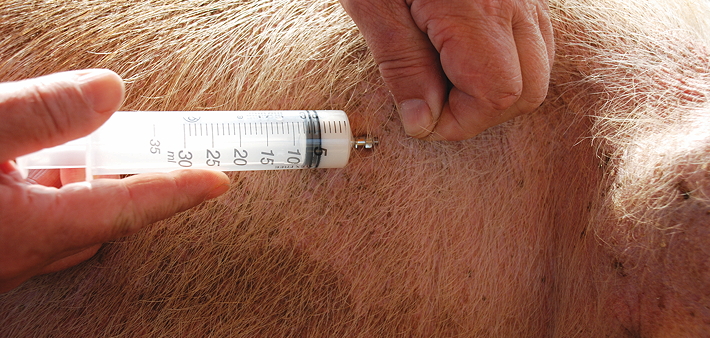New figures showing a continuing reduction in antibiotic sales for livestock in Europe also reveal that the UK is among the lowest users among European countries on the basis of livestock volumes.
Sales of antibiotics for farm animals in Europe fell from 107mg/PCU in 2017 to 103.2mg/PCU in 2018, according to the 10th annual report from the European Surveillance of Veterinary Antimicrobial Consumption (ESVAC), examining antibiotic sales across different European countries in 2018.
The latest figure continued the downward trend and meant usage has fallen by over one-third between 2011 and 2018.
Sales of antibiotics in UK and across Europe in 2018 (ESVAC)
|
UK average 2018 (mg/PCU) |
EU country average 2018 (mg/PCU) |
|||||
|
2016 |
2017 |
2018 |
2016 |
2017 |
2018 |
|
| Total Use |
39 |
32.5 |
29.5 |
124.6 |
107.0 |
103.2 |
| Fluoroquinolones |
0.2 |
0.2 |
0.1 |
2.7 |
2.4 |
2.5 |
| 3rd and 4th Gen Cephalosporins |
0.1 |
0.1 |
0.1 |
0.2 |
0.2 |
0.2 |
| Polymyxins (colistin) |
0.02 |
<0.01 |
<0.01 |
6.4 |
3.6 |
3.4 |
Ahead of the imminent announcement of new sector targets, the UK retained its position as having the fifth lowest sales overall, averaging 29.5mg/PCU, well below the European average. While this is partly due to the UK’s relatively high numbers of sheep, the falling UK figure also undoubtedly reflects in part the huge strides made by the UK pig sector to reduce usage.
UK pig sector usage fell from 278mg/PCU in 2015 to just 110 mg/PCU in 2018, according to data collated on the eMB-Pigs database.
The ESVAC figures also show a continuing downward trend in sales of the highest priority antibiotics – 3rd and 4th generation cephalosporins, fluoroquinolones and colistin.
RUMA chair Cat McLaughlin said it was ‘very positive to see this downward trend across almost all countries, not just in terms of total sales but also these highest priority antibiotics.
The UK’s significant reductions in antibiotic use in farm animals over the past six years meant it remained among the lowest users of antibiotics overall – and the lowest among European countries with large domestic populations and farm animal sectors, she added.
“The efforts and enthusiasm demonstrated by the UK livestock farmers and animal health practitioners to embrace RUMA principles of using antibiotics and other veterinary medicines responsibly to achieve these results has been phenomenal,” said Ms McLaughlin.
New antibiotic targets
UK figures for 2019 sales of antibiotics for farm animals are due out shortly and new sector-specific targets for the UK livestock industry 2021-2024 are also scheduled to be released in November. The last targets, developed by a ‘Targets Task Force’ (TTF), which included a 2020 of 99mg/PCU for the pig sector, run their course at the end of this year.
Ms McLaughlin said most goals had now been achieved or had run their course and need revisiting.
“We’ve seen many livestock sectors facing new disease and environmental challenges, or experience challenges with data collection. This makes the forthcoming release of the new targets and a ‘reset’ of activities very timely.”
NPA reaction
NPA senior policy adviser Rebecca Veale said: “I am very pleased to see the progress that we, and other European countries, have made in responsible antibiotic use.
“Whilst there is some very interesting information presented within the report, the systems we use differ by country and so it should be considered in context.
“The most important trend is that the use of Highest Priority Critically Important Antibiotics has declined – the risk of antimicrobial resistance and the implications this has on human and animal health is the reason we take responsible use of antibiotics so seriously in the pig sector. Therefore, this decline is a very important one.”
Rebecca sits on the Pig Health and Welfare Council AMU sub group, which continues to plan for the next phase of targets for the pig sector.
“We are excited to share them when they are published by RUMA in November,” she said.




